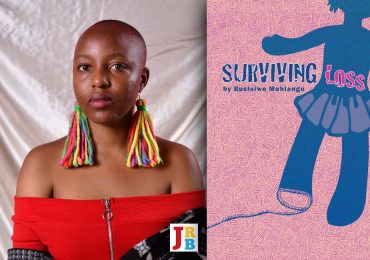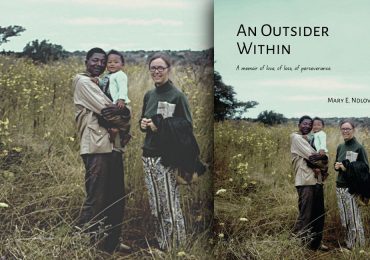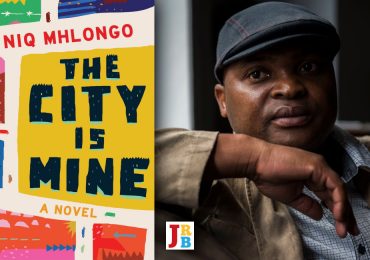The JRB presents an edited excerpt from the Introduction to The Pan-African Pantheon: Prophets, Poets and Philosophers by Adekeye Adebajo.
August 2021 marked the twentieth anniversary of the United Nations (UN) World Conference against Racism, Racial Discrimination, Xenophobia and Related Intolerance, which took place in South Africa’s port city of Durban in August/September 2001. While Durban did not change the world, it provided a rallying point for contemporary racial struggles for reparations for the twin crimes against humanity: slavery and colonialism. Black Lives Matter and other civic movements built on this foundation to mobilise anti-racism protesters around the globe in 2020 more effectively than at any time in living memory. Democrats in the United States (US) Congress now support the cause of reparations: an issue that appropriately formed the focus of a high-level debate at the UN General Assembly on the post-Durban conference in September 2021. Oppressive statues have now been toppled. In May 2021, the German government apologised, and announced reparations of $1.3 billion for a century-old genocide in Namibia. Harvard, Yale, and Oxford have established programmes of restitution for their involvement in the slave trade.
These struggles are part of a 250-year Pan-African battle against Western-led slavery and colonialism. Pan-Africanism can be defined as the efforts to promote the political, socioeconomic and cultural unity; emancipation; and self-reliance of Africa and its diaspora. The ideology argues that Africans on the continent and around the globe share a common history. Pan-Africanists in the Caribbean and the Americas felt physically and culturally dispossessed by slavery, while those on the continent felt economically and mentally dislocated through colonialism. Both were therefore seeking to affirm their sense of worth and dignity. Blacks in the diaspora had deeply internalised a racism born of four and a half centuries of European slavery. The concept of Pan-Africanism thus developed amid the sweltering oppression of slavery in the Caribbean and the Americas. It is worth retracing this history in order better to understand contemporary struggles for reparations.
The Original Sin: Europe’s Enslavement of Africans
Slavery was undoubtedly Europe’s ‘original sin’ against Africa. European locusts—explorers, slavers, merchants, missionaries, and imperialists—arrived in Africa in the fifteenth century, and for the next four and a half centuries ravaged and pillaged the continent. In the process, they spread destructive plague and pestilence. As with biblical locusts, the agricultural sector, in which most Africans were located, was destroyed; famines proliferated; and the greatest migration in human history was enforced, with enchained human cargo being transported to the Caribbean and the Americas as chattel in utterly degrading circumstances.
Colonialism was the continuation of slavery by other means, with enslavement dehumanising Africans globally and providing the racist justifications and economic methods to implement colonialism on the basis that Africans could not yet stand on their own feet in the difficult conditions of Western ‘civilisation’. European enslavement of Africans to work on plantations in the Caribbean and the Americas thus created one of the world’s largest diasporas, and flowed seamlessly into a century of Western imperialism of the African continent. Both systems involved profit-driven exploitation—cloaked under the perverse justifications of a mission civilisatrice—which blamed their African victims for their own misfortunes, while the whole project was legitimised by Western politicians and priests, scholars and scientists, as well as monarchs and merchants.
Between twelve and fifteen million Africans were transported to the Caribbean and the Americas between 1450 and 1888 in the notorious transatlantic slave trade. The slavers mostly involved seven European nations: Britain, France, Portugal, Spain, the Netherlands, Sweden and Denmark. By the seventeenth century, slaves were being exported to work on sugar plantations in Jamaica, Cuba, Haiti, Trinidad and Tobago, Martinique and Barbados, as well as plantations in Brazil, Mexico, Peru and Colombia. The US, which had been born out of the European genocide of the indigenous population, was also deeply involved in this trade, having inherited sugar, tobacco, and rice-growing slave plantations from former British overlords in 1776. African slaves thus worked on Southern cotton plantations to feed British textile factories, becoming the heart of the American economy.
These enslaved populations came mostly from contemporary Senegal, Gambia, Nigeria, Benin, Côte d’Ivoire, Mali, Guinea-Bissau, the Congos (Kinshasa and Brazzaville), Cameroon, Gabon, Angola, Tanzania, Malawi, Mozambique and Zambia. Captives were usually kidnapped in wars between African kingdoms and principalities, while some had been convicted of domestic crimes of a sometimes dubious nature. About eighty per cent of the enslaved were exported to the Americas in the eighteenth and early nineteenth century, while an estimated twenty-five to thirty-five per cent of these slaves died en route. Millions of the most productive African men and women (typically between the ages of fifteen and thirty-five) were thus enslaved in their prime, and an entire continent was depopulated. Famines increased in some areas, as slave hunters and warriors were prioritised over farmers and entrepreneurs. Slavery effectively arrested human and socio-economic development, as well as intra-regional trade. This inhuman commerce provided the capital for Europe’s and America’s industrial revolutions. The West’s industrialisation was thus literally built on the backs of African slaves.
African Political and Cultural Resistance to Slavery
Aside from numerous slave revolts in the Caribbean and the Americas (notably in Jamaica, Cuba, Brazil and the US), there were many cases of African resistance to European colonialism such as the seventeenth-century Queen Njinga’s Ndongo kingdom in contemporary Angola, which bravely resisted Portuguese colonisers during her three-decade rule. Civil society-led Pan-Africanist movements also emerged in the US and the Caribbean by the eighteenth century to provide African resistance to the evils of slavery and to promote the liberation of Africans on the Mother continent. Black churches such as America’s African Methodist Episcopal Church and Jamaica’s Ethiopian Baptist Church played a particularly prominent role in this resistance. The Haitian Revolution, which created the world’s first Black Republic—and only the second independent Republic in the Hemisphere—succeeded in 1804 as a result of a slave revolt, famously memorialised in CLR James’s 1938 The Black Jacobins.
On the cultural front, Haitians, Afro-Brazilians, and Afro-Cubans also preserved indigenous African religions which were often fused syncretically with Catholicism. ‘Negro’ spirituals were characteristic especially of slaves in the American South, as eloquently captured in WEB Du Bois’s 1903 The Souls of Black Folk. Blues and jazz both emerged directly from slavery, based on the rhythmic West African traditional work songs that the slaves sang on Southern plantations. The improvisational nature of jazz is also tied to this same slave culture. It is no exaggeration to note that America’s popular music—from jazz to Motown to hip-hop to rap—had its roots in this historical slave tradition. It is also no surprise that some of the saddest people in the world invented the singing of the blues, underlining African American writer Maya Angelou’s insight about ‘why the caged bird sings.’
How Europe Underdeveloped Africa, the Caribbean, and Latin America
The link between slavery and colonialism is inextricable. Scholars like Guyana’s Walter Rodney, in his 1972 classic, How Europe Underdeveloped Africa, have shown how European powers created the economic dependence of the ‘periphery’ on the metropolitan ‘core’ in order to perfect the system of colonial rule in the Caribbean and the Americas during two centuries of slavery, before formally applying it to Africa for a century. Africa was notoriously declared a res nullius—a no man’s land—conquered by brutal European imperialists such as England’s Cecil Rhodes and Belgium’s King Leopold II. British explorer David Livingstone described colonialism in the apparently benign terms of the ‘three Cs’: Commerce, Christianity and Civilisation. The more malign ‘three Ps’ may, in fact, have been more accurate: Profit, Plunder and Prestige.
The search for new markets amidst a global Great Depression in the early eighteen-eighties was a widespread concern that spurred on European imperialism in Africa. Scientific techniques were introduced into colonial territories that led to the production of minerals and cash crops like cocoa, coffee, palm oil, rubber, cotton, phosphates, diamonds, gold and tobacco. African economies were thus structured—as the economies in the Caribbean and the Americas had been for two centuries—to produce crops to meet European consumer needs. This both increased their dependence on metropolitan economies and, in many cases, negatively impacted on their ability to produce their own food. Africans, Caribbeans and Latin Americans thus typically imbibed Western consumption patterns without acquiring Western production methods.
Prophets of Pan-Africanism
Nineteenth century scholar-diplomat St Thomas’s Edward Blyden is widely regarded as the ‘Father of Pan-Africanism’ and its most important conceptualiser. His two most important ideas were of a triple African heritage of Christianity, Islam and indigenous cultures as captured in a magisterial 1888 study; and of an ‘African Personality’ through which Africans would make a unique contribution to the world, and rediscover their own soul by returning to their indigenous cultural values. Blyden also championed the concept of ‘Ethiopianism’ which envisioned an African regeneration based on biblical Scriptures.
The more contemporary Pan-Africanist movement was formally born in 1900, fifteen years after the rules were set for the partition of Africa at the notorious Berlin Conference of 1884/1885, and twenty-four years after Black Americans had had their rights revoked following a dozen years of Reconstruction between 1865 and 1877. The First Pan-African Conference was held in London in 1900, and was convened by Trinidadian lawyer, Henry Sylvester-Williams. Within fifteen years, Jamaica’s Marcus Garvey and Amy Ashwood Garvey were mobilising huge crowds of Black Americans in New York’s Harlem and across the country with their ‘Back to Africa’ movement urging African Americans to return to build their ancestral continent. Between 1919 and 1945, five Pan-African Congresses took place in Europe and America. By the time of the Fifth Pan-African Congress in Manchester in 1945—organised by Kwame Nkrumah and the towering Trinidadian scholar-activist, George Padmore—the movement had shifted its centre of influence from the diaspora to Africa.
Economic development and regional integration, however, proved difficult to achieve in the Caribbean—as in Africa—after independence from the nineteen-sixties, owing to the insularity within its small, mono-crop (focused mostly on bauxite, sugar and agriculture) and tourism-dependent islands that have consistently asserted parochial identities over regional ones. As in Africa, with its sixteen land-locked countries, the Caribbean’s micro-states, with a total population of only twenty million, largely failed to cooperate more closely to attain the economies of scale needed to achieve industrialisation.
The Quest for Reparations
In light of the contemporary global anti-slavery and anti-colonial protests led by the Black Lives Matter movement, a burning issue that has not been adequately addressed is that of reparations for the victims of these two evil scourges in the Americas, the Caribbean and Africa. How can Western nations who enslaved and colonised Black people for nearly five centuries repair this pernicious damage that has left all three regions with the triple burdens of a lack of development, diseases, and deadly conflicts? This remains a festering wound that needs to be healed. As the 400th anniversary of American slavery was commemorated in 2019, calls for reparations for descendants of this exploitative system grew louder.
Similar campaigns also exist in Africa and the Caribbean. Rather perversely, it was slave-owners—and not the slaves themselves or their descendants—who were compensated by the American and British governments for the loss of their ‘property’: the British government, for example, paid the contemporary equivalent of £20 billion to slave-owners after the abolition of slavery across its empire in 1833.
The most articulate African American crusader of reparations has been the civil rights activist Randall Robinson. He has consistently argued for reparations to close the 250-year gap between white and black Americans created by plantation slavery. Late African American Nobel laureate Toni Morrison persistently talked of ‘the layers of scar tissue that the blackbody has grown in order to obscure, if not annihilate, the slavebody underneath.’ As Robinson correctly noted: ‘the black holocaust is far and away the most heinous human rights crime visited upon any group of people in the world over the last five hundred years.’ He noted that Germany paid individual Jewish survivors and the state of Israel reparations—estimated at $98 billion—for the ghastly but much shorter Holocaust (1933–45), while Japanese Americans interned in concentration camps by President Franklin D Roosevelt during World War II were compensated with a $1.2 million payment.
Robinson further observed that indigenous people received land and money for the Australian colonial government’s genocidal campaign against them, as did members of the Canadian Inuit group, who were provided $700 million. To understand the continuing structural impact of slavery in the US, one need go no further than the ‘Great Plague’ of the 2020/2021 Covid-19 pandemic: despite accounting for only 13.8 per cent of the population, Black Americans were being hospitalised at rates 2.9 times higher than white Americans, and dying from the disease at rates 1.9 times faster.
In the Caribbean, Barbadian historian and chair of the Caribbean Community’s (CARICOM) Reparations Commission, Hilary Beckles, similarly noted that ‘slavery and genocide in the Caribbean are lived experiences despite over a century of emancipation’. Modern ailments common among Caribbean citizens like diabetes and hypertension can be traced directly to the bad diet and sugary drinks inherited from the era of European slavery and colonialism. A 2004 estimate of the cost of the slave trade to the Caribbean arrived at a figure of £7.5 trillion. Beckles, therefore, urged European slaving nations to pay reparations to Caribbean countries in order to repair this damage.
In August 2019, Scotland’s Glasgow University agreed to raise £20 million to establish a joint Centre for Development Research at the University of the West Indies (UWI) to start to atone for its sins in having benefited from Scottish slave traders in the Caribbean. Oxford University’s All Souls College also announced an annual scholarship for West Indian students, and provided a £100,000 grant to Codrington College in Barbados, for having received funding from an eighteenth-century slave trader, Christopher Codrington, after whom the main college library was named until November 2020.
In the African context, the late Nigerian historian JF Ade Ajayi was a member of the Organisation of African Unity’s (OAU) Eminent Persons Group on Reparations in 1992–1993, which demanded that the West recognise its moral debt to Africa and its diaspora for slavery and colonialism, and pay these populations full monetary compensation. Ajayi further noted that about one million Africans had died defending their European colonial masters during two World Wars. He thus called for four key measures to achieve reparations: domestic education and mobilisation in African societies; documentation and research on the costs of slavery and colonialism; making a cogent case for reparations; and agreeing on the strategy, manner, and mode of reparations, having placed the issue on the agenda of the UN.
Rebuilding Diasporic Bridges: Towards A People-Driven Pan-Africanism
In concluding this voyage that has stretched from Accra to Atlanta to Antigua and Arequipa, it is important to note that the Pan-African solidarity forged in the crucible of five centuries of slavery, colonialism, and the decolonisation and anti-apartheid struggles, has largely dissipated. Pan-Africanism is thus in urgent need of revival. The ideology will now need to build a new civil society-led movement to champion the contemporary struggle for reparations to compensate the victims of slavery and colonialism. In order to succeed, stronger bridges must be restored between Africa and its diaspora that go beyond the sterile Pan-Africanism of governments to embrace a reinvigorated Pan-Africanism of peoples.
It is crucial that some flesh be added to the skeletal bones of the diaspora as the sixth African Union (AU) sub-region. Entrepreneurial members of the African American diaspora have invested heavily in African countries like South Africa and Liberia, while Africans in the diaspora now contribute more money annually to their ancestral homes than do foreign donors. The millions of highly educated Africans in the diaspora can further be mobilised to build a viable constituency for Africa in their host countries.
The African-born population in the US doubled every decade between 1970 and 2020 to reach 2.4 million: most are from Nigeria, Ethiopia and Ghana. In the Caribbean, identification with Africa has grown tremendously as a result of Nigeria-produced Nollywood movies which has led to its populations experiencing cultures and people with whom they can readily identify. But the level of social interaction and trade between both regions is abysmally low, despite periodic high-level intergovernmental summits. The geographical pull of the US—where many Caribbean students study, and even more desire to study—along with the overwhelming American cultural pull, still remain strong influences, especially among the region’s youth.
Having united to attain the political kingdom from the nineteen-sixties, Africa and its neglected diaspora in the Caribbean and the Americas must now collaborate to pursue contemporary struggles for reparations, by building a new people-driven Pan-Africanism.
- Adekeye Adebajo is the Director of the Institute for Pan-African Thought and Conversation (IPATC) at the University of Johannesburg in South Africa. He is the editor of The Pan-African Pantheon: Prophets, Poets, and Philosophers.





